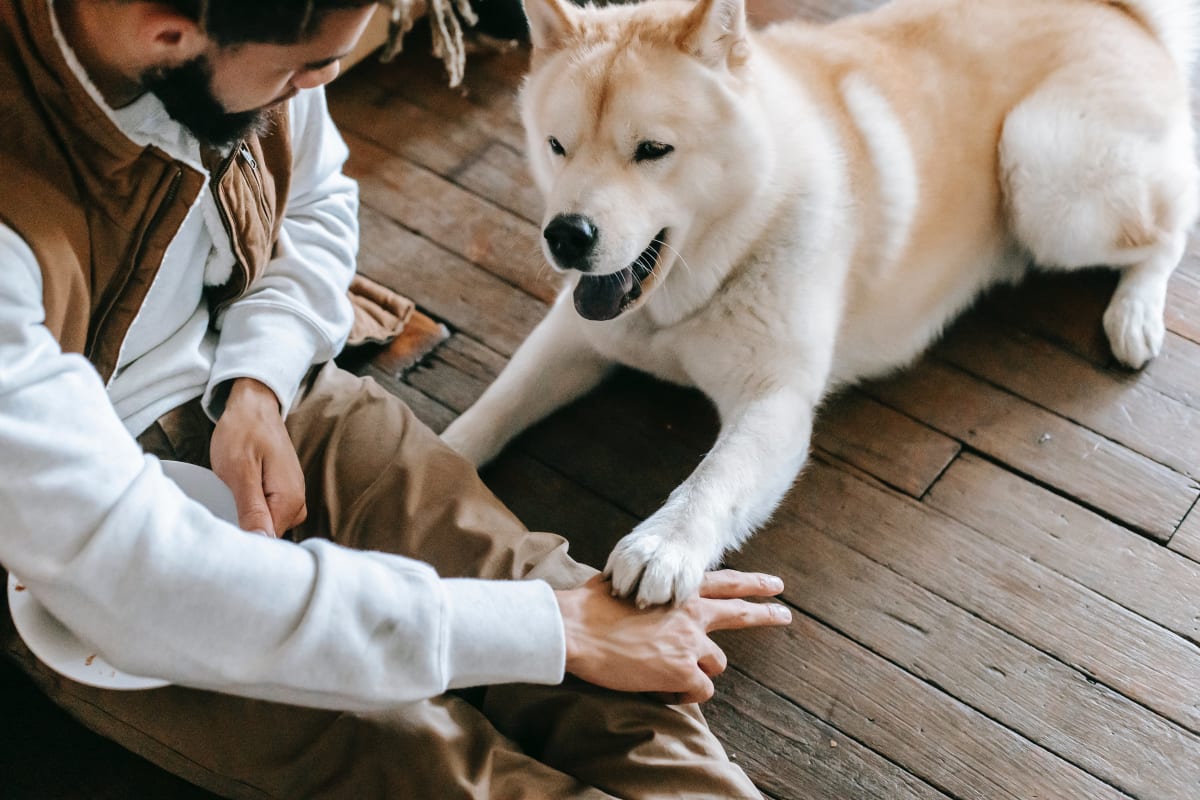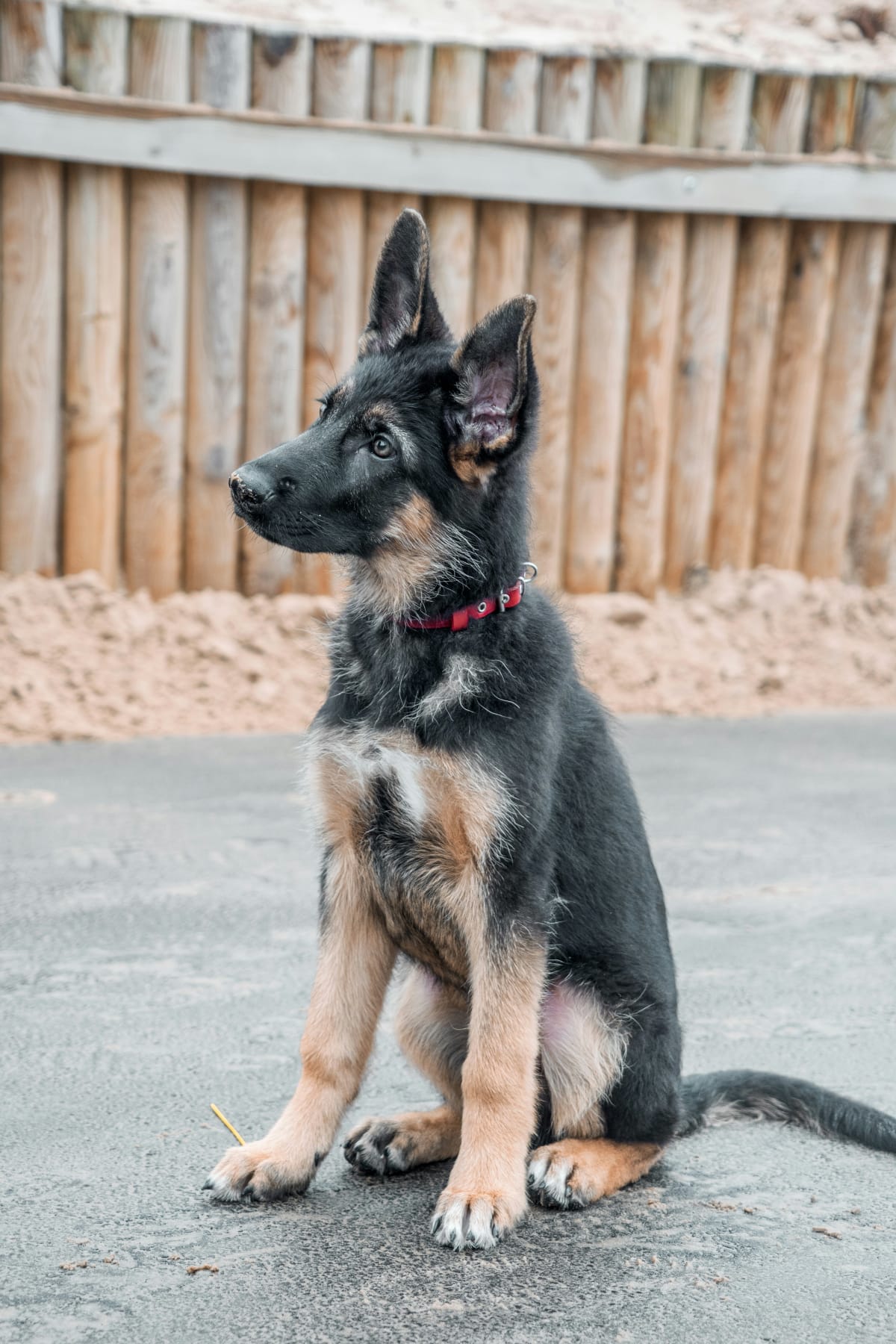Teaching your dog basic obedience is important for many reasons, both behavioral and emotional. The first few weeks with your pup are critical in establishing a positive relationship with your new furry friend, and a great place to start is with basic commands. Keep reading to learn more!
Set Up a Training Space
 To get started, bring a few training tools into a safe, enclosed yard. You'll need to use six components: a dog handler (that's you), a dog, verbal commands, hand signals, a noise, and rewards. Keep in mind, before filling your pocket with a handful of treats, consider what sort of reward reinforces good behavior but isn't so exciting that it distracts your puppy. This can be tough! Try to get treats that don't take a long time to chew, swallow, or are so amazing they forget what you are focusing on. After all, training time is about repeating the lessons quickly enough so that the desired behavior is easily learned. Once you have a solid treat, you can get down to business.
To get started, bring a few training tools into a safe, enclosed yard. You'll need to use six components: a dog handler (that's you), a dog, verbal commands, hand signals, a noise, and rewards. Keep in mind, before filling your pocket with a handful of treats, consider what sort of reward reinforces good behavior but isn't so exciting that it distracts your puppy. This can be tough! Try to get treats that don't take a long time to chew, swallow, or are so amazing they forget what you are focusing on. After all, training time is about repeating the lessons quickly enough so that the desired behavior is easily learned. Once you have a solid treat, you can get down to business.
Common commands in training are "come", "sit", and "stay.” For the youngest of pups, start by rewarding them every time they respond to the sound of your voice. Right away, you are teaching the dog to pay close attention to your words. Some trainers like to use a clicker. The clicker system of training quickly and precisely indicates to your dog what behavior you are rewarding. If you use a clicker, always give the reward after making the click sound.
Let your little guy run loose in the yard. Every time they look your way, give praise, a noise, and reward. If the puppy seems distracted and you cannot get their attention, use a squeaky toy. When they look your way, give praise, make the noise to reinforce good behavior, and lastly, reward with a small treat. Repeat these steps often; you are teaching the pup how to respond to their world, and how to communicate with you.
The Power of Verbal Commands
Getting your puppy to adopt a new behavior will go more quickly if you start giving rewards a few weeks prior to introducing the verbal command. For example, before teaching your puppy the word “sit,” give a treat periodically when he or she sits on their own. You are linking the sitting behavior with the treat - and then you can introduce the verbal command. Repeating this over and over along with the signal and a noise produces fairly quick results.
"Come"

When teaching your puppy verbal commands, begin with “come.” Initially, don't worry about actually saying it out loud. Wait for the pup to look at you, call out their name in a happy and inviting voice, and say “good boy/girl.” If your puppy becomes distracted, try getting them to chase you. Turn around and let them catch up with you, then give verbal praise and a reward. When you see that the puppy keeps an eye on you because you are the bearer of great rewards, introduce the verbal command, “come.”
"Sit"
When your pup learns that coming and interacting with you leads to a positive experience, they are more likely to move on to new verbal commands. Think of the command “sit” as meaning “watch me.”
At this level, you can pair simple gestures with verbal commands. For example, a hand signal is a visual hint at the motion you want the dog to repeat. For "sit,” stand near your puppy and hold your hand above their head, then move your hand in a semicircle. Move the signal down their back, and move to their rear end. Your puppy will follow your hand motion and naturally sit. Give him or her a treat, and repeat!
Additionally, you can try "sit" by positioning the dog with their back end near a wall. As you signal to sit and they back up, their rear is bumped by the wall. It becomes a reminder of what the verbal command refers to and the pup sits. Any hand signals you use during early training can be decreased or dropped as your dog understands the verbal command.
"Stay"
Now that your new pup understands and responds to the command “sit,” they're in the precise position you need to teach them “stay.” The hand signal for “stay” can be the same one used by traffic police. Face your hand toward the dog with all fingers together pointing up. The training steps are: say “stay” quickly and firmly, hold your hand up, wait three seconds, and reward the puppy with a “good dog” and a treat. Follow “sit” with “stay,” and you will have two verbal commands working in conjunction.
It’s also important to note that most commands are about action, and your puppy will associate their name with movement. That said, you should not use your dog's name when verbally commanding “stay.” Since “stay” is often required for safety, like sitting still on the opposite side of the street until you reach your dog, don't confuse them by shouting their name while verbalizing this command.
Tying it All Together
 Teaching a puppy commands is really just setting up your own communication system with an animal. Along with commands, consider other phrases you use while talking to your dog. Phrases are another way to build a language and bond between the two of you. They are useful and train your dog to listen intently any time you speak. Examples of common phrases are:
Teaching a puppy commands is really just setting up your own communication system with an animal. Along with commands, consider other phrases you use while talking to your dog. Phrases are another way to build a language and bond between the two of you. They are useful and train your dog to listen intently any time you speak. Examples of common phrases are:
- “Bedtime for (pup's name).”
- “Go for a ride?”
- “Go for a walk?”
- “Need a drink?”
- “Ready to eat?”
With a little bit of patience and a whole lot of love, puppies can be trained in no time. Try to make it a fun experience, enjoy yourselves, and know this new relationship is developing into a lifelong friendship.
Looking for your newest furry friend? Find one on Lancaster Puppies today!

